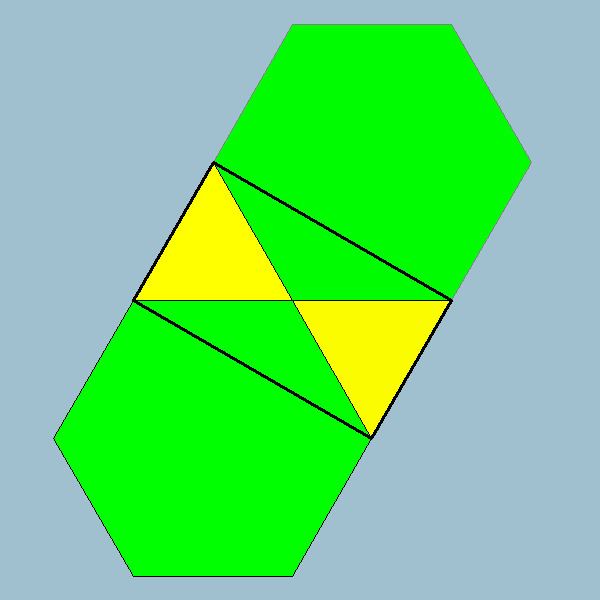 | ||
In geometry, the cyclotruncated simplectic honeycomb (or cyclotruncated n-simplex honeycomb) is a dimensional infinite series of honeycombs, based on the symmetry of the
It is also called a Kagome lattice in two and three dimensions, although it is not a lattice.
In n-dimensions, each can be seen as a set of n+1 sets of parallel hyperplanes that divide space. Each hyperplane contains the same honeycomb of one dimension lower.
In 1-dimension, the honeycomb represents an apeirogon, with alternately colored line segments. In 2-dimensions, the honeycomb represents the trihexagonal tiling, with Coxeter graph . In 3-dimensions it represents the quarter cubic honeycomb, with Coxeter graph filling space with alternately tetrahedral and truncated tetrahedral cells. In 4-dimensions it is called a cyclotruncated 5-cell honeycomb, with Coxeter graph , with 5-cell, truncated 5-cell, and bitruncated 5-cell facets. In 5-dimensions it is called an cyclotruncated 5-simplex honeycomb, with Coxeter graph , filling space by 5-simplex, truncated 5-simplex, and bitruncated 5-simplex facets. In 6-dimensions it is called a cyclotruncated 6-simplex honeycomb, with Coxeter graph , filling space by 6-simplex, truncated 6-simplex, bitruncated 6-simplex, and tritruncated 6-simplex facets.
Projection by folding
The cyclotruncated (2n+1)- and 2n-simplex honeycombs and (2n-1)-simplex honeycombs can be projected into the n-dimensional hypercubic honeycomb by a geometric folding operation that maps two pairs of mirrors into each other, sharing the same vertex arrangement:
